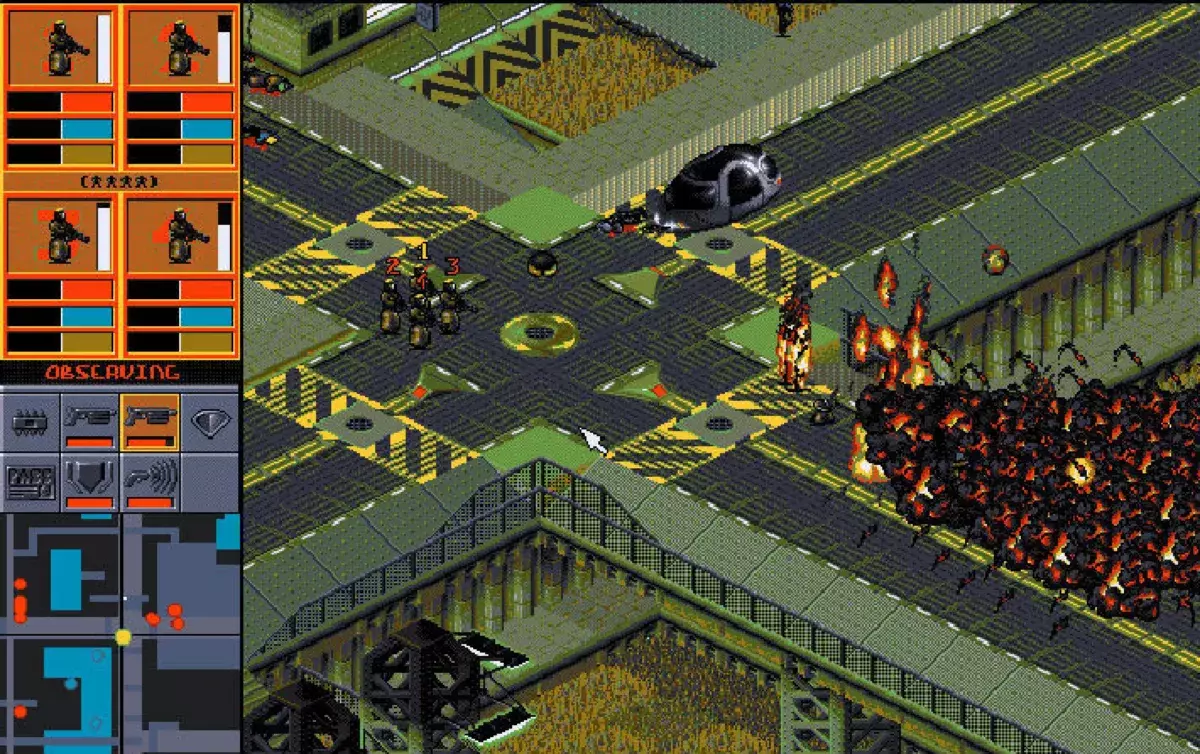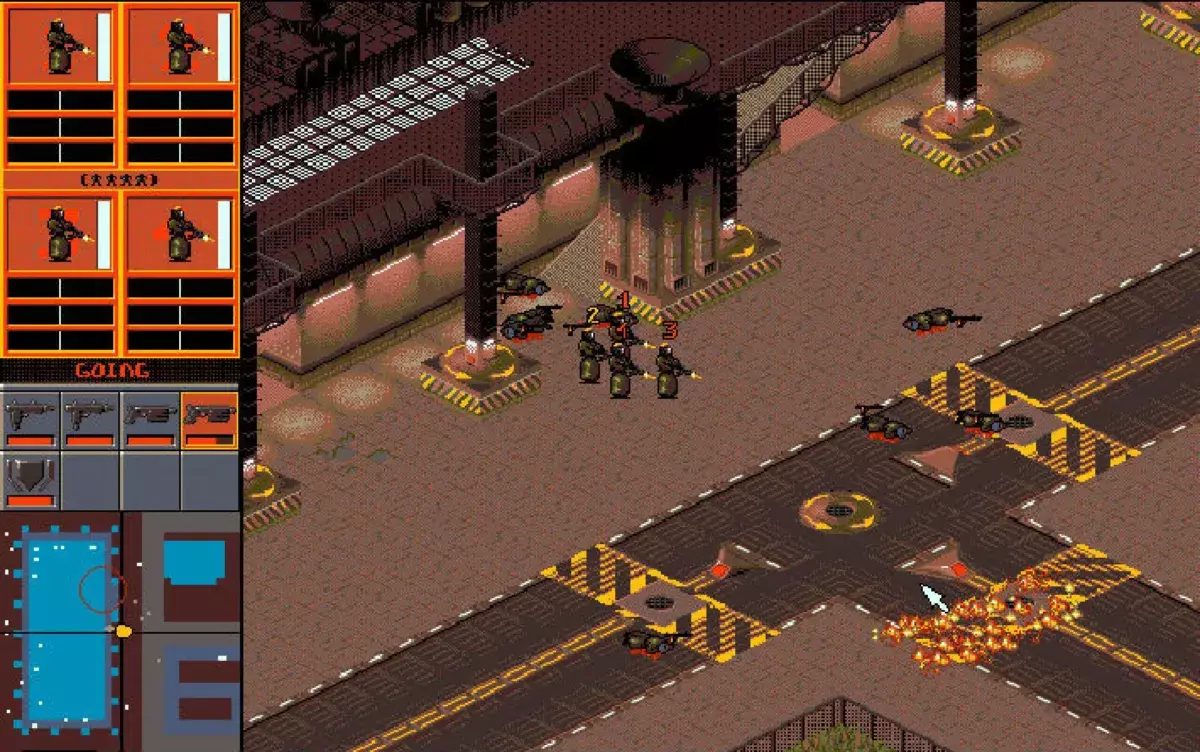
Speaking to ACE Magazine in April 1992, Peter Molyneux was characteristically enthusiastic about his company’s upcoming project, then called BOB. At the time, Molyneux’s Bullfrog Productions was already famous in Amiga and PC circles for the genre-defining god game, Populous. BOB, as described by Molyneux, would be even more ambitious than even that strategy hit. A futuristic management simulator, of sorts, BOB would see rival corporations vie for global domination. “You start in your office with a map of the world showing all the major companies,” Molyneux told then-journalist Gary Penn. “They start small, and their growth is related to the way you play. We’re aiming to fit in around a hundred countries with all the major cities – hopefully around two or three hundred. Each city’s around four times the size of a Populous map.” Molyneux added that cities would have functioning road and rail systems, human populations that scurried to and from work, and even a stock market, which players could manipulate from the comfort of their virtual office. Said Molyneux, “You can hire and fire people or pump money into research and development for Neural Chips or new genetically engineered troops. You can even watch television… We’re trying to fit in as many adverts as possible. We’re hoping to fit in about twenty minutes’ worth.” BOB – which stood for Blue and Orange Bloke – changed considerably on its path to completion. By the time it emerged as Syndicate on 6 June 1993, it bore only a scant resemblance to the game Molyneux breathlessly described only one year earlier. Management elements still remained, but the bulk of the game mostly took place on the streets of those futuristic cities. The goal was still world domination, but this was achieved not through manipulating the stock market, but through wielding gigantic firearms. Players controlled a squad of up to four armoured cyborgs in a string of bloody missions that took place in cities around the world. Completing missions – which invariably involved murder, kidnapping, and destruction on a grand scale – would cause that territory to fall into the hands of the player’s corporation, increasing their flow of cash, which they could then spend on researching new weapons and upgrades for their cyborgs. The result was one of the most absorbing games of the 16-bit era, with an almost perfect balance of tactics and gleefully amoral action. Completed missions often left behind a string of bloodied corpses and burned out cars; a troublingly effective device called the Persuadertron – which could be used to turn civilians and cops into mindless drones, following your cyborgs around – only underlined the game’s cold-blooded themes. That Molyneux’s concept for what would become Syndicate was so vastly different from the finished product might suggest a troubled development cycle. But in subsequent interviews, designer and lead programmer Sean Cooper paints a picture of a small team rapidly iterating through ideas, trying stuff out, and chucking away anything they didn’t find enjoyable. The Persuadertron, for example, emerged from a throwaway conversation that took place in the office one day; Cooper thought the idea of a device that could control people’s brains sounded like a good one, so into the mix it went. According to Cooper, talking to IncGamers – in a conversation preserved by PC Invasion – Syndicate’s original concept was born from a similarly loose conversation. In 1990, Cooper had recently completed his debut game, the cutesy platformer Flood, and had joined Bullfrog as a permanent member of the team. Down the pub one afternoon, conversation turned to future projects, and the suggestion that, “We wanna gun everyone down – we want to kill loads of people,” according to Cooper. Despite Molyneux’s lofty descriptions of a cyberpunk business sim, violence was therefore baked into the project from the beginning. Before long, Cooper and his collaborators had come up with an isometric game engine with squads of eight orange and blue figures running around – hence the working title, Blue and Orange Bloke. The team soon got a multiplayer version of the engine running, which allowed two players to control the rival teams of agents and guide them around the map, shooting at one another. From here, more elements were gradually added in; Cooper recalled that Peter came in one day and said that the cities’ human populations should walk around and go to and from their mindless office jobs.

Credit: Bullfrog/EA.

Credit: Bullfrog/EA.






